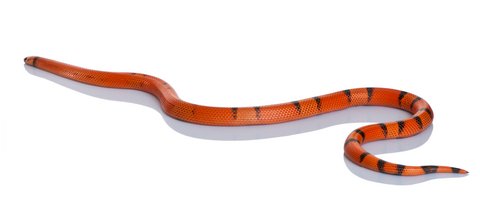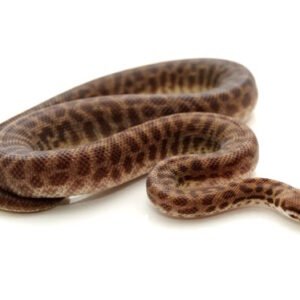Physical Characteristics and Habitat
The Honduran milk snake (Lampropeltis triangulum hondurensis) is renowned for its striking appearance and distinct physical characteristics that contribute to its allure among snake enthusiasts. Typically, adults measure between 3 to 5 feet in length, although some individuals can exceed this range. Their most distinguishing feature is their vibrant coloration, which consists of a bold pattern of red, black, and yellow or white bands. This vivid coloring serves as a warning signal to potential predators, mimicking the venomous coral snake, thereby enhancing their survival in the wild.
Beyond their size and coloration, Honduran milk snakes possess smooth, shiny scales that aid in their locomotion through various terrains. The shape of their head, which is slightly broader than the neck, also sets them apart from other non-venomous serpents in the region. The underside of these snakes is typically lighter in hue, providing a level of camouflage that assists in their predatory lifestyle.
Honduran milk snakes predominantly inhabit tropical and subtropical regions of Central America, thriving in environments such as rainforests, grasslands, and rocky areas. They exhibit a preference for areas with abundant cover, such as leaf litter or dense vegetation, which provides both shelter and hunting grounds. These snakes are primarily nocturnal, aligning their active hours with the cooler temperatures of the night to hunt for prey, including small mammals, lizards, and other reptiles.
Understanding the physical characteristics and preferred habitat of the Honduran milk snake is crucial for appreciating its role in the ecosystem. Their vibrant colors not only enhance their beauty but also play a significant role in their interaction with the environment and their ability to evade predators. By recognizing their habitat preferences, enthusiasts and researchers can better support conservation efforts to protect this unique species and its natural environment.
Care and Handling in Captivity
When considering the care for a Honduran milk snake, it is essential to understand their specific dietary needs. As carnivorous reptiles, these snakes primarily consume rodents, such as mice or small rats, typically offered in pre-killed form to minimize the risk of injury. Feeding should occur every 7 to 10 days, and it is vital to ensure that the prey is appropriately sized, ideally being no larger than the widest part of the snake’s body. Supplementing their diet with vitamins and minerals can also contribute to their overall health.
Creating an optimal habitat is critical for the welfare of a Honduran milk snake. A suitable enclosure should be spacious, with a minimum size of 20 gallons for adults, allowing for ample movement and exploration. The habitat should contain suitable substrate like aspen shavings or coconut fiber, which also aids in humidity control. Importantly, temperature gradients must be established within the enclosure, with a basking area maintained at about 85-90°F, while the cooler side should be around 70-75°F. A humidity level of 40-60% is ideal, complemented by hiding spots that help promote a feeling of safety.
Regular handling can improve the bond between the owner and the snake, but it should be done carefully to minimize stress. During handling, always support the snake’s body fully, avoiding any sudden movements. It’s also advisable to allow the snake time to acclimate to its new environment. Observing their behavior can provide insight into their comfort level and health, as signs such as lethargy, refusal to eat, or unusual shedding patterns might indicate potential health issues. Creating a stress-free environment and providing attention to their unique care requirements will ensure a healthy, thriving Honduran milk snake and a rewarding experience for their owner.





